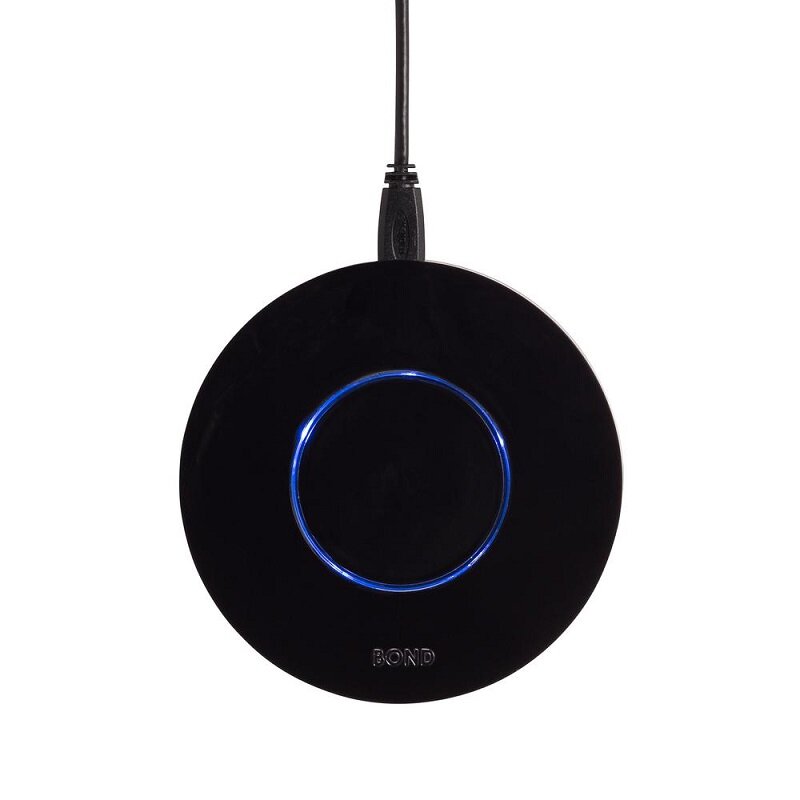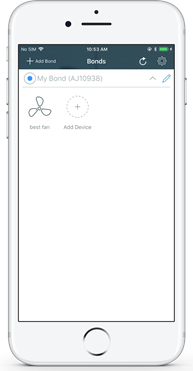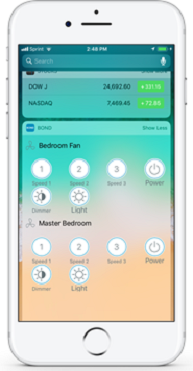Bond Bridge Review: Smart control for your dumb appliances
When you buy through links in this article, I may earn an affiliate commission. Learn More.
If you’re into smart home automation like I am, you quickly start to realize the utility and opportunity of adding more of your home’s stuff to your smart home platform.
Not only can you control them conveniently by voice and on your smartphone, but you can start to integrate them into automation rules that make it seem like your house is marking sensible decisions on it’s own. This is where I really enjoy getting things working right, and it’s a good feeling when your home starts to seem like it knows what to do at the right time.
Unfortunately, there are a lot of appliances that we can’t control this way, and that would be expensive (and wasteful) to replace with a model that does, if you can even find one. Things like ceiling fans, motorized shades, air conditioners and and remote controlled fire places are what we’re talking about here. That’s where the Bond Bridge from Olibra comes in, and it does a pretty good job of it too.
Bond Bridge Overview
Like many smart home hubs, the Bond Bridge is a small ‘hockey puck’ like device that you need to ideally position in the open for it to send IR signals to your devices in the room. It’s able to recognize and learn the signals from your existing remote controls so it can then emulate those itself, allowing you to control those appliances via from your smart phone over Wi-Fi.
Unlike other learning universal remotes, Bond is able to recognize RF remotes as well infra-red. This means it can control things like ceiling fans and fireplaces than typically don’t have any smart interface capability. This is particularly good for those ceilings fans which use DC motors as these can’t use smart wall controls like Lutron’s Caseta Fan Speed controller.
The hub only comes in black, which might be galling to some given the need to have it in the open, but it’s not unusual for smart hubs like this to not offer color choices. The top sports a light ring, and that’s used to indicate status through various solid and flashing colors. Once it’s up and running correctly you’ll be left with a steady blue nightlight, but you can dim or disable it from the app.
Using the Bond Bridge
Setting up the Bond is fairly simple. You’ll need the Bond Home app, of course, and you’ll need to create an account. This is for remote access, and so you can connect it to Alexa and Google Assistant. The app will step you through connecting your Wi-Fi network, and then you’ll be ready to add your first remote.
Bond has a large database of remote controls which it will try and use to identify and automatically set up your appliance, but if it doesn’t recognize it, you can still program it manually in the Bond Home app. It takes a few minutes, but it’s straightforward to do and the app guides you through it well.
Amazon Alexa, Google Assistant, SmartThings, and Control4 are all officially support. IFTTT used to be a big draw, but Bond dropped that support recently. The applet is still there, but it no longer works with the latest app version. There’s no HomeKit support, however there is a good plugin for the open source Homebridge solution, so you may want to take a look at that. There are also integrations available in the ELAN and Hubitat systems.
Aside from the app, voice control or the remotes, you can also set up widgets on both Android and iOS. You can choose which appliances you want in the widget, and what controls to show. The Android version uses a scrolling widget, so you can accommodate all the controls for an appliance if you want.
Having the Bond out in the open is necessary only if you need to use the IR functionality. That needs the appliance to be controlled and the Bond to be in the same room, and with a clear enough view for the IR signal to get between the two. For RF devices, however, you can control them anywhere in the typical home. Bond claims up to 2500 sqft will be covered. I don’t have a huge house, but there are customer reports of being able to control devices on floors above and below a Bond in the center of the house, so you won’t have any trouble with range.
One caveat with the RF controls though is that Bond currently only supports remotes in the 300-450Mhz range, not those that operate in the 2.4GHz band. They say they are working on that, but I wouldn’t expect it to be possible on the existing hardware.
Adding a device
Device type selection
Function Programming
Widgets
One issue that’s come up is that some functions, commonly integrated fan lights, don’t have an on/off state. The remote simply sends a toggle message, and the fan will switch it over; off to on, or on to off. This means that the Bond app can’t tell what state the light is in.
To combat this Bond has an optional feature called Light State Tracking. This will try and keep track of the light state when using the app or voice assistant. It’s not perfect though, as if you use the remote it can still get out of sync. You simply need to use the remote to switch it back again to what Bond thinks it is. This is an issues that’s pretty specific to fan lights, and if you avoid using the old remote it won’t be a problem.
Another potential issue is that you can have drop out between your Alexa or Google account and the Bond account. This necessitates resetting the association, which is not a huge problem so long as it doesn’t happen too often. The fact that Bond has a FAQ on how to do this suggests it’s common enough though.
The Verdict
The Bond Bridge fills a fairly unique gap in the smart home right now by enabling control of those dumb appliances with RF remotes. Other hubs have been able to handle IR remote signals, but it’s nice that Bond can do both thereby cutting down on the number of hubs you need.
The Bond app is easy to set up and use, and offers the flexibility to learn whatever functions your remote has, even if Bond don’t know about it. So if you do need to add control over remote controlled ceiling fans or motorized shades, this is a fairly cost effective way to do it compared to having to retrofit Wi-Fi controllers into your appliances.
Being a niche product it’s still a bit pricey for what it does compared to some more capable smart hubs, but none of those can do what Bond does, and that makes it an easy choice if you really want that control.
















